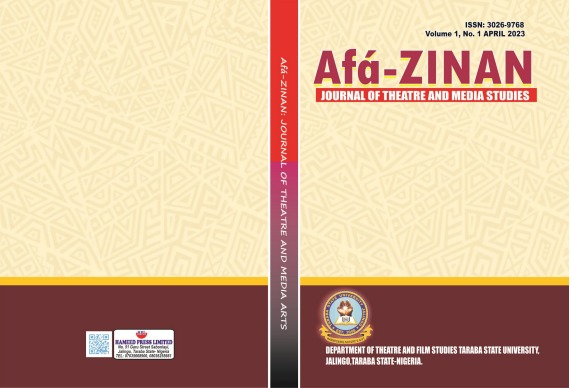Mimesis and the Paronomasia of (In)Fidelity in Kunle Afolayan’s Anikulapo (2022)
Keywords:
Fidelity, Infidelity, Mimesis, Paronomasia, Resource, AnikulapoAbstract
The human creative skill and imagination is often a consequence of social life. Whether it comes as film, music, painting, dance or literature, art is a byproduct of life and society. It is a representation of that which already exists, a precursor text, in order to create beauty and excitement through a new manifestation. And it is in this manifestation that the mimetic is invoked. The imitation/appropriation of a preexistent text, like history, myth, literature and folktales is often examined from the binary problematic of exactitude and platitude (fidelity) or of creativity and adventure (infidelity). This paper concerns itself with Kunle Afolayan’s Anikulapo as a mimetic representation of culture and myth/history and interrogates notions of fidelity and paronomasiac infidelity. It applies filmic documentary observation as a method and formalism as a theory to argue that art may require the history and myth of a people as source material to express itself, but it is not confined to the limits of the material’s originality. It argues that mimesis is not the faithful reproduction of a matter as it is but an unfaithful reconsideration of a text as it could be. It also argues that however its dependence on a pre-existent text, an adapted text should be adjudged based on the internal workings of its own meaning-making
propensities. The paper concludes that a precursory source is merely a resource, for the filmmaker, as for the artist in general; a material to be imitated as art, and art only works for the service of its own purposes and not for a slavish fidelity to accuracy and the creation of an exact equivalence.

